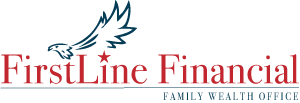Early this year, many stopped spending and began saving money. This wasn’t difficult as many areas of the economy were — and possibly still are — shut down. For some, vacation plans were canceled, and the normal level of entertainment activities and dining out have been curbed. If you’ve remained employed, chances are good you’ve been able to step up your level of savings this year. However, with current interest rates, it can feel like savings accounts are stagnating. Should you take the risk of investing for higher returns amid today’s continuing market uncertainty?1
It’s worth noting that by mid-August, the S&P 500 had fully recovered from the 34% pandemic-induced plunge that occurred between February and March earlier this year.2 Of course, this is great news for equity investors who stayed in the market, but stock portfolios continue to be worrisome. You may wonder if financial rewards are truly commensurate given the level of anxiety associated with market declines, but there are ways to help reduce your risks and still have the opportunity for growth. If you’d like to discuss various options, please feel free to contact us.
Traditionally, stocks have yielded higher long-term gains than bond portfolios, but the tradeoff is more volatility. A recent analysis by a Wharton professor shows that historical dynamic has shifted somewhat throughout the past five decades. In fact, fixed-income portfolios have performed as well, if not better, than the U.S. stock market during this time frame. Perhaps even more surprising, fixed income has exhibited similar or more volatility than comparably performing stock portfolios.3
According to the Capital Group, investors may want to consider four strategies for deploying a fixed-income portfolio during this current period of investment uncertainty:4
- Look at short-term bond funds that focus on high-quality and liquid investments.
- Consider high-quality core bond funds for capital preservation to help diversify equity holdings.
- Be prepared for defaults and downgrades at the high yield, low end of the investment-grade spectrum.
- Reconsider municipal bonds, which offer pockets of compelling value relative to U.S. Treasurys.
The interest rate environment is another casualty of the pandemic. Low rates may keep debt payments low, but they also spell lower returns for retirement accounts and pension funds. The recent Federal Reserve announcement that it expects to hold interest rates near zero at least until 2023 does not bode well for retirees or those approaching retirement.5
1 Jill Cornfield. CNBC. June 22, 2020. “You saved a lot of money during the shutdown. Here’s one reason you may not feel like you’re ahead.” https://www.cnbc.com/2020/06/22/why-you-dont-feel-better-about-the-money-you-saved-amid-the-pandemic.html. Accessed Oct. 5, 2020.
2 Stan Choe, Alex Veiga and Christopher Rugaber. Associated Press. Aug. 12, 2020. “How can Wall Street be so healthy when Main Street isn’t?” https://apnews.com/article/6cadd78335fd98926ffb1e5d6ecb2916. Accessed Oct. 5, 2020.
3 Knowledge@Wharton. Aug. 11, 2020. “How Fixed-income Portfolios Match or Beat Stocks in the Long Run.” https://knowledge.wharton.upenn.edu/article/fixed-income-portfolios-match-beat-stocks-long-run/. Accessed Oct. 5, 2020.
4 Mike Gitlin, Pramod Atluri and Karl Zeile. Capital Group. June 17, 2020. “Four actions to take in bond portfolios.”
https://www.capitalgroup.com/advisor/insights/articles/fixed-income-midyear-outlook-2020.html. Accessed Oct. 5, 2020.
5 Knowledge@Wharton. Oct. 6, 2020. “Why Low Interest Rates Hurt Retirees.” https://knowledge.wharton.upenn.edu/article/why-low-interest-rates-hurt-retirees/. Accessed Oct. 6, 2020.
Photo by Mathieu Stern on Unsplash


